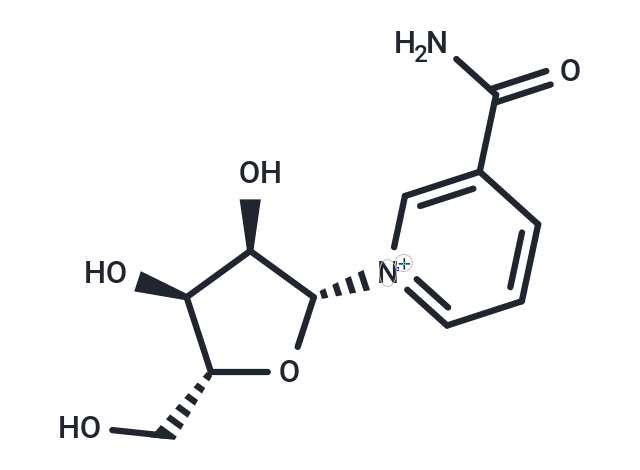Shopping Cart
- Remove All
 Your shopping cart is currently empty
Your shopping cart is currently empty

Nicotinamide riboside increases NAD[+] levels and activates SIRT1 and SIRT3, culminating in enhanced oxidative metabolism and protection against high fat diet-induced metabolic abnormalities.

| Pack Size | Price | Availability | Quantity |
|---|---|---|---|
| 5 mg | $50 | In Stock | |
| 200 mg | $240 | In Stock |
| Description | Nicotinamide riboside increases NAD[+] levels and activates SIRT1 and SIRT3, culminating in enhanced oxidative metabolism and protection against high fat diet-induced metabolic abnormalities. |
| In vitro | Nicotinamide riboside (NR) supplementation in mammalian cells and mouse tissues increases NAD(+) levels and activates SIRT1 and SIRT3, culminating in enhanced oxidative metabolism and protection against high-fat diet-induced metabolic abnormalities. |
| In vivo | The natural vitamin Nicotinamide riboside (NR) could be used as a nutritional supplement to ameliorate metabolic and age-related disorders characterized by defective mitochondrial function. |
| Molecular Weight | 255.25 |
| Formula | C11H15N2O5 |
| Cas No. | 1341-23-7 |
| Smiles | O[C@H]1[C@@H](O[C@H](CO)[C@H]1O)[N+]=2C=C(C(N)=O)C=CC2 |
| Relative Density. | 1.201g/cm3 |
| Storage | Powder: -20°C for 3 years | In solvent: -80°C for 1 year | Shipping with blue ice. | |||||||||||||||||||||||||||||||||||
| Solubility Information | DMSO: 50 mg/mL (195.89 mM), Sonication is recommended. H2O: 50 mg/mL (195.89 mM), Sonication is recommended. | |||||||||||||||||||||||||||||||||||
Solution Preparation Table | ||||||||||||||||||||||||||||||||||||
DMSO/H2O
| ||||||||||||||||||||||||||||||||||||

Copyright © 2015-2025 TargetMol Chemicals Inc. All Rights Reserved.